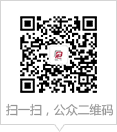支撑韩都衣舍商业模式的信息系统
案例编号:
CN_2019XXXTYDZSW_4538
被浏览次数:
4909
案例名称:
支撑韩都衣舍商业模式的信息系统
译名:
The Information Systems that Support the Business Model of Handu
案例作者:
毛基业、谢莉娟、王诗桪
作者单位:
中国人民大学商学院
译者:
Mao Jiye, Xie Lijuan and Wang Shixun
案例企业:
韩都衣舍电子商务集团股份有限公司
行业:
贸易/商业
学科领域:
信息系统与电子商务、其他
规模:
大型
案例语种:
中文
案例类型:
决策型
中文关键词:
电子商务、IT与核心竞争能力、柔性供应链、商务智能、大数据
英文关键词:
e-business; IT and core competitiveness; flexible supply chain; business intelligence; big data
中文摘要:
本案例描述了韩都衣舍逐步建立IT系统,并走向商业智能时代的过程。韩都衣舍于2006年成立,主要依托电子商务平台进行韩国风格的服装销售。2012年“双11”,韩都衣舍销售额位居服装企业首位。然而,由于信息系统的薄弱,发货、拣货、生产等问题频出。2013年,韩都衣舍开始了信息化之路,逐渐建立了WMS(库存管理系统)、OMS(订单管理系统)、SCM(供应链管理系统)等多个系统。2014年后,韩都衣舍的IT系统不仅提高了业务运营效率,更与韩都衣舍的战略方向及核心竞争力联系紧密,依托IT系统构建的商业智能成为树立竞争优势的关键。韩都衣舍信息化的成功也使得其不断思考IT系统在未来的发展方向。本案例通过描述韩都衣舍信息化建立前后的业务运营情况,以及各IT系统的开发情况,说明信息化在构建互联网企业核心竞争能力中所发挥的作用,以及互联网企业开发信息系统的次序及优先级。
英文摘要:
This teaching case describes how Handu built up its information systems step by step and entered the era of business intelligence. Founded in 2006, Handu mainly relies on an e-business platform for sales of clothes in the Southern Korean style. In the Double 11 Shopping Spree in 2012, Handu’s sales volume ranked No.1 among all garment dealers. The weakness of its information systems has caused frequent problems in delivery, order picking and production. In 2013, Handu started its road to developing IT applications internally, by gradually building up its WMS (warehouse management systems), OMS (order management systems) and SCM (supply chain management systems). Since 2014, the IT systems of Handu not only had higher service operation efficiency but became closely aligned to the strategy and core competitiveness of Handu, so that the business intelligence enabled by the IT systems became the pivot of garnering competitive strength. The success of Handu’s IT applications also drove it to keep thinking of the future orientation of IT systems. By describing the operation of Handu before and after the development of various IT systems, this case intends to illustrate the role of information systems in building the core competitiveness of an online firm and the sequence and priorities of information systems developed by online firms.
适用对象:
本科、学术硕士、专业硕士、高管培训
编写方式:
采编
开发时间:
2017
入库时间:
2019
索要案例使用说明:
确认订购本案例:


